Warbirds Over Whatcom Bomb Drop Chaos
This is Bomb Drop Chaos from last year's Warbirds Over Whatcom event. The next one is coming up July 21-21, so join the fun if you can at Bell Air R/C Flyers Club in Ferndale, WA!
The links in this description are affiliate links. They give me a small commission on sales which helps support the channel and keep it independent: https://www.amazon.com/shop/gblyndensrc
Video Equipment Used To Make This Video:
- Sony AX-33 Camcorder: https://amzn.to/2RHVhpI
- SanDisk Extreme Pro SD Card: https://amzn.to/2BzXZU0
I have been making videos at this event for the past several years and it is always a lot of fun to get out and see the RC Warbirds of all kinds do their thing.
In this video you will see primarily WWI Warbirds buzzing the target and dropping bombs. My favorite is the Curtiss P-6E Hawk Biplane.
Here is some history on that RC Bipe:
"The Curtiss P-6 Hawk is an American single-engine biplane fighter introduced into service in the late 1920s with the United States Army Air Corps and operated until the late 1930s prior to the outbreak of World War II.
A fast and highly maneuverable aircraft for its time, the XP-6 prototype took 2nd place in the 1927 U.S. National Air Races, and the XP-6A with wing surface radiators took first place, at 201 mph (323 km/h). The P-6 was flown in a variety of paint schemes depending on the squadron, the most famous being the "Snow Owl" markings of the 17th Pursuit Squadron based at Selfridge Field near Detroit, Michigan.
The P-6Es served between 1932 and 1937 with the 1st Pursuit Group (17th and 94th PS) at Selfridge, and with the 8th Pursuit Group (33rd PS) at Langley Field, Virginia. Numerous accidents claimed at least 27 of the 46 aircraft delivered. As the P-6Es became obsolete, instead of receiving depot overhauls, they were allowed to wear out in service and were scrapped or sold. At least one survived into 1942 in United States Army Air Forces service.
In 1932, Capt. Ruben C. Moffat flew a P-6 converted with a supercharged Conqueror engine on a record-breaking flight. He flew from Dayton, Ohio to Washington, D.C. at a speed of approximately 266 mph, at an altitude of 25,000 ft.
A single P-6E survives. The aircraft was donated to the Smithsonian National Air and Space Museum by Mr. Edward S. Perkins of Anniston, Alabama and restored by the School of Aeronautics at Purdue University. It is on indefinite loan and display at the National Museum of the United States Air Force at Wright-Patterson AFB near Dayton, Ohio. Originally s/n 32-261 and assigned to the 33rd Pursuit Squadron, it was dropped from records at Tampa Field, Florida, in September 1939. It was restored and marked as 32-240 of 17th Pursuit Squadron, missing on a flight over Lake Erie on 24 September 1932."
If you enjoyed watching this RC Bipe video, be sure to follow me on Social Media to keep up with all of the fun!
Facebook: https://www.facebook.com/GBLyndensRC
Instagram: https://www.instagram.com/GBLyndensRC/
Twitter: https://twitter.com/GBLyndensRC
-
 3:58
3:58
GBLynden's RC
10 years agoCurtiss P-6E Hawk Biplane with Bomb Drop at Warbirds Over Whatcom
2 -
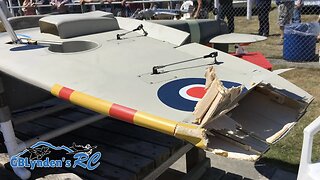 2:33
2:33
GBLynden's RC
7 years agoRC Plane Crash Landing - Giant Scale Spitfire WWII Warbird at Warbirds Over Whatcom
92 -
 47:53
47:53
AmericanMediaEphemera
1 year agoHow to fly the B-26
27 -
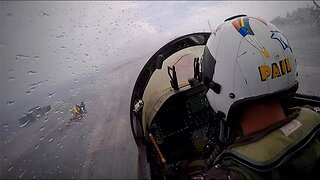 10:42
10:42
Growler Jams
1 year agoTHUNDERSTORM Catapult Launch! - US Navy EA-18G Cockpit View - Original Unedited and Drenched
1.1K -
 20:26
20:26
Task & Purpose
7 months ago $0.02 earnedRIP Nighthawk Stealth Attack Aircraft....or not?
5071 -
 34:57
34:57
AmericanMediaEphemera
1 year agoFlight Charecteristics of a P-38
56 -
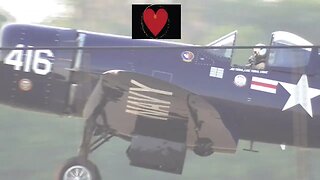 1:30
1:30
LiveCamStreaming
9 months agoP51 Warbirds Taxi the Runway! P-51 Mustang,: #airshow #navy #p51mustang
16 -
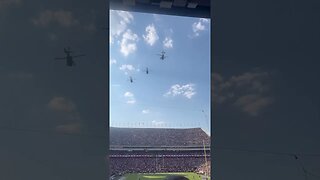 0:10
0:10
redhawkcoaching
10 months agoIncredible Helicopter Flyover at Kyle Field: A&M vs New Mexico College Football Game
115 -
 10:42
10:42
Growler Jams
1 year agoVOICEOVER - THUNDERSTORM Catapult Launch - US Navy EA-18G Growler Cockpit View - Salty and Drenched
1.12K -
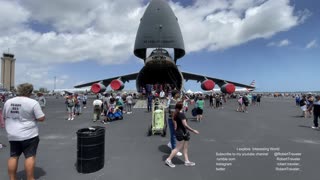 4:50
4:50
Robert Traveler
11 months agoWings Over Homestead – Air Show – 2023 #Thunderbirds
69